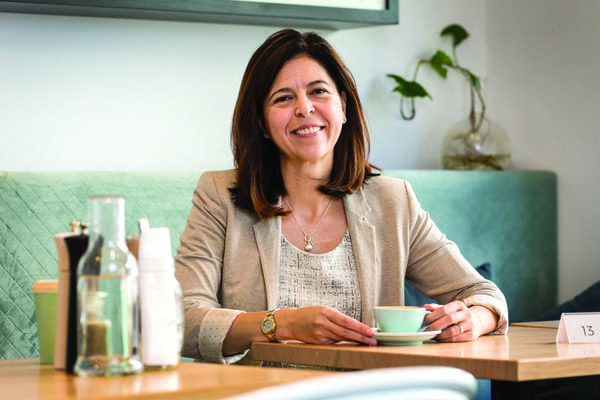“When I look back on my career, I always describe it as taking a leap of faith off the top of a challenging cliff,” Woodside Energy’s Asset Development Manager says. “Sometimes you have to learn to fly after you jump off the cliff.”
Taking career risks started after Kimberly finished her Petroleum Engineering degree at the University of Texas where she was the only female to graduate in her year. She accepted a position in Alaska with BP, where she was posted to work on remote operations inside the Arctic Circle and found herself, once again, the only female amongst her colleagues.
“I’ve always been a glass half-full person. Throughout my early career, maybe I didn’t experience a gender divide because I wasn’t looking for it. I always found that everybody treated me with respect.”
After four years in Alaska, Kimberly moved to the Middle East to join her new husband in Oman, where the country’s first LNG project was being constructed in a partnership with Shell.
“Having spent four years working on oilfields in the Arctic, I knew nothing about gas developments in the desert. I had taken a massive salary cut to leave BP, but I was employed and from the start I viewed it as an incredible opportunity: one in which I was being paid to learn.”
Kimberly’s employment with Shell took her and her husband from Oman to Gabon, where home for the next three years was a remote camp in the jungle, where the employees lived and worked on top of a producing oil field.
“We had never visited (Gabon) – I had to look it up on a map to find out exactly where it was – I went there with no pre-conceived ideas of what to expect, so every new experience was just a complete eye-opening opportunity.”
After the birth of her first child, Kimberly’s family relocated to Perth, where she commenced work on a secondment placement with Woodside Energy. She has since joined Woodside on a permanent basis and heads up the Asset Development Program for the company’s Scarborough Project, located in the Carnarvon Basin in Western Australia.
The diversity of Kimberly’s career has seen many changes, not only geographically and culturally, but also how female leaders are perceived in the workplace.
“I went through the period of the ‘90s where women who made it into management needed to act like men and they needed to dress like men…you would have these women wearing power suits with big shoulder pads,” she says. “You couldn’t possibly be seen to be nice, because being nice was correlated with not being competent. In order to be a successful female leader back then, you needed to be strong, you needed to be strict, you needed to coldly decisive and act like a stereotypical male leader.”
“Over the years, I have seen leadership expectations change. Women are valued for the unique leadership style that they bring to the table…leading like the women they are, rather than the traditional male role models of the past.
“Having made that transition into management myself, I often questioned whether I should be acting more like a man to be respected as a leader.
“But having more female role models in the office and seeing them be their authentic selves, gives me the confidence that I can continue to lead the way that is authentic to me.”
Encouraging more women in the engineering workforce
Woodside Energy has committed to gender equality across the workforce, and has started with a dedicated focus on 50/50 gender diversity in their graduate program. While Kimberly says this effort has been successful, there’s a lot more work to be done to encourage young females to choose an engineering degree in the first instance. Engineering body, Engineers Australia issued a report which showed that females only make up 15% of applications for engineering-related university courses in 2015.
“What I’m still concerned about is young girls not making the choice to study STEM subjects. I have a had a few surprising conversations with young women around the office in non-engineering roles who have said to me, “If I had known what engineers did at work when I was at university, I would have chosen engineering. But at the time, I didn’t realise that it was something for me.”
In 2016 it was reported that women only made up 12% of the engineering workforce, and recent studies by Brighter, an initiative of APPEA, the voice of the Australian oil and gas industry, shows that 44 per cent of Australian women have a limited understanding of the types of jobs which make up the gas industry.
“My advice to young, aspiring engineers – both female and male – is to just keep saying ‘yes’ when opportunities present themselves. Whenever an opportunity comes your way, even if you are doubting yourself, just say ‘yes’, jump off that cliff and trust yourself that you will learn to fly on the way down.
“That’s what happened to me. I have taken advantage of every career opportunity that came my way, even when I wasn’t sure that I was fully up to the challenge, but it’s led me to where I am today!”


